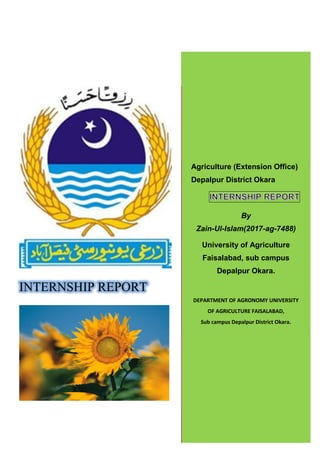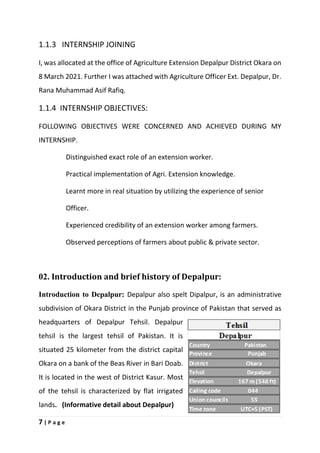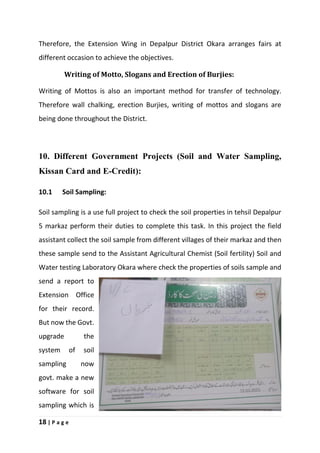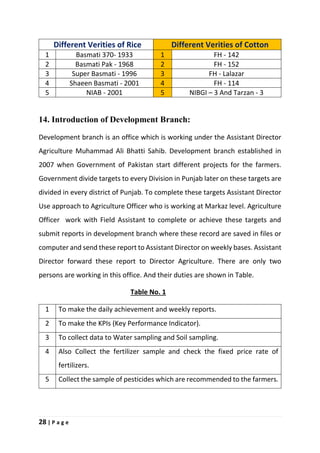Zain-Ul-Islam completed a 3-month internship with the Agriculture Extension Office in Depalpur District, Okara. The internship report documents Zain-Ul-Islam's activities assisting with soil and water sampling, distribution of government subsidies on agricultural implements, and learning about crop production technologies. It also provides background information on Depalpur District, including its history, population, and important Muslim saints. The report aims to fulfill the practical experience requirements for Zain-Ul-Islam's BSc degree in Agriculture from the University of Agriculture Faisalabad.















































